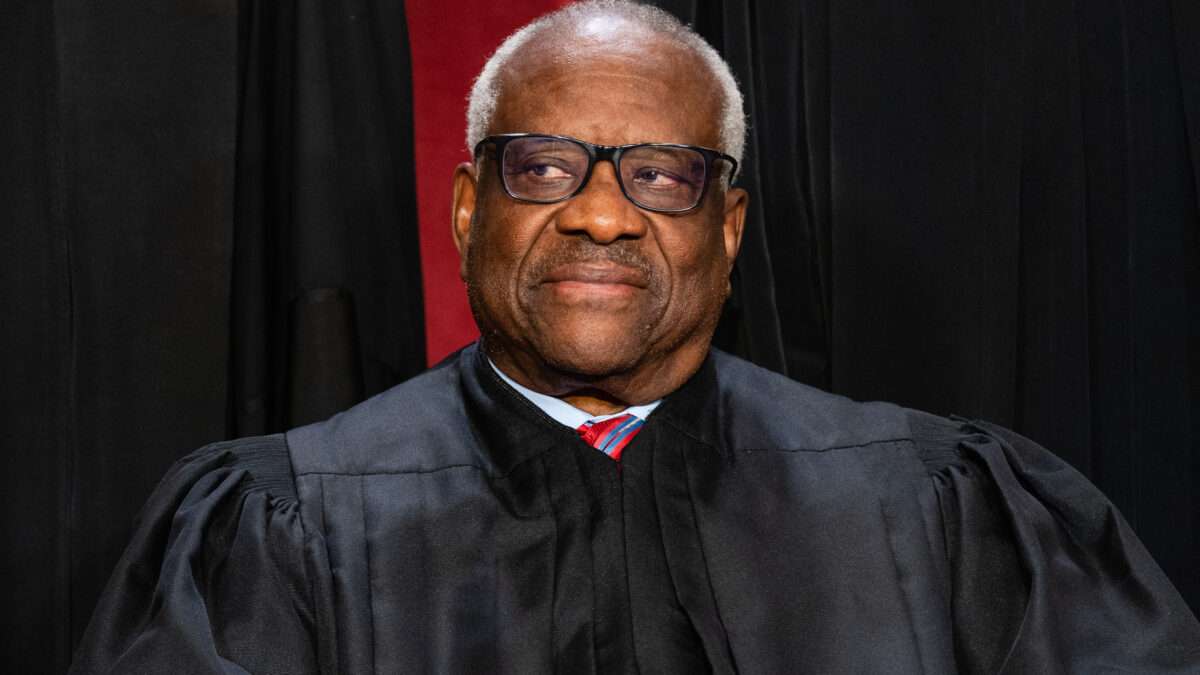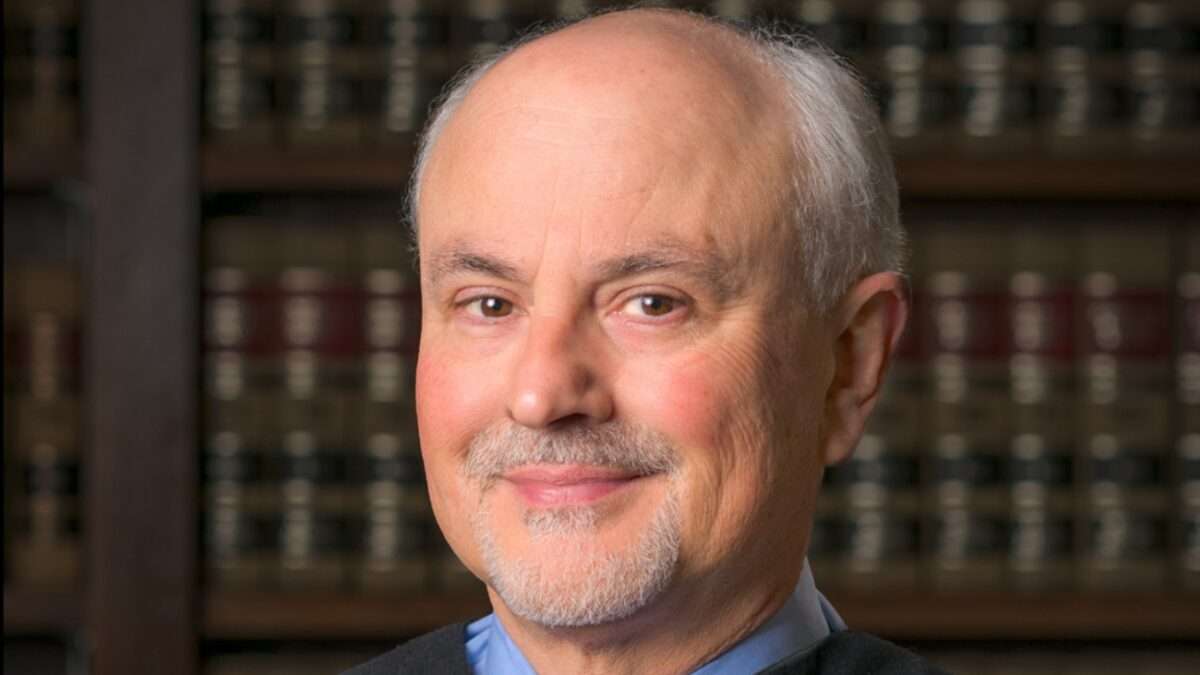A Federal Judge Reluctantly Concludes That New Jersey's AR-15 Ban Is Unconstitutional

This week, a federal judge ruled that a major provision of New Jersey's "assault weapon" ban is unconstitutional, but he was not happy about saying so. The decision illustrates how the Supreme Court's Second Amendment precedents have constrained the discretion of judges who are personally inclined to support gun control.
New Jersey's Assault Firearms Law—which the state Legislature approved in 1990, responding to a mass shooting at a Stockton, California, elementary school the previous year—bans a list of specific rifle models, along with "any firearm manufactured under any designation which is substantially identical to any of the firearms listed above." According to guidelines that New Jersey Attorney General Peter Verniero issued in 1996, the latter description encompasses semi-automatic rifles that accept detachable magazines and have at least two of five features: a folding or telescoping stock, a pistol grip, a bayonet mount, a flash suppressor or threaded barrel designed to accommodate one, or a grenade launcher. Illegal possession of "assault firearms" is a second-degree crime punishable by five to 10 years in prison and a maximum fine of $150,000.
In separate lawsuits that U.S. District Judge Peter Sheridan considered together, several gun owners and two gun rights groups, the Firearms Policy Coalition (FPC) and the Association of New Jersey Rifle and Pistol Clubs (ANJRPC), argued that the rifle ban is unconstitutional. Sheridan's decision in ANJRPC v. Platkin focuses on the Colt AR-15, one of the specifically banned rifles, because it was the model mentioned most frequently by the plaintiffs and the state.
"The information presented to the Court focuses largely on one specific type of firearm: the AR-15," Sheridan writes. "And given the variety of firearms regulated in the Assault Firearms Law and the nuances that each individual firearm presents, the Court's analysis of the Assault Firearms Law is limited to the firearm with which the Court has been provided the most information: the AR-15."
Sheridan, a senior judge who was appointed to the U.S. District Court for the District of New Jersey by George W. Bush in 2005, repeatedly refers specifically to "the Colt AR-15." But he also notes that "the AR-15 is produced by several different manufacturers," including FN, Ruger, Remington, Bushmaster, Rock River Arms, Wilson Combat, Barrett, Panther Arms, H&K, Lewis Machine, Olympic Arms, Palmetto State Armory, and Mossberg. So his conclusion that "the AR-15 Provision is unconstitutional" evidently applies to all AR-15-style rifles, regardless of who makes them or what they are officially called.
Before explaining his reasoning in reaching that conclusion, Sheridan expresses his dismay at the Supreme Court precedents he is required to follow. "It is hard to accept the Supreme Court's pronouncements that certain firearms policy choices are 'off the table' when frequently, radical individuals possess and use these same firearms for evil purposes," he says. "Even so, the Court's decision today is dictated by one of the most elementary legal principles within our legal system: stare decisis. That is, where the Supreme Court has set forth the law of our Nation, as a lower court, I am bound to follow it. This principle—combined with the reckless inaction of our governmental leaders to address the mass shooting tragedy afflicting our Nation—necessitates the Court's decision."
Despite his personal policy preferences, Sheridan thinks it is clear that the AR-15 qualifies as a weapon "in common use" for "lawful purposes like self-defense"—the sort of arms that the Supreme Court has said are covered by the Second Amendment. He notes a 2022 estimate that Americans owned about 24 million "AR-15s and similar sporting rifles," and he highlights testimony that such guns are useful for home defense.
"Plaintiffs have shown that AR-15s are well-adapted for self-defense," Sheridan writes. "Evidence has been presented to the Court that the build of the AR-15 makes it well-suited to self-defense because it is 'light weight, [has] very mild recoil, and [has] good ergonomics'; it is a weapon which is 'well suited to younger shooters, female shooters, and other shooters of smaller stature.'" He adds that "the AR-15's design features—including the effectiveness of its cartridge for self-defense use and its better continuity of fire when used with available magazines—make the AR-15 a good choice for self-defense." And he notes that "the AR-15 has been used recently in several, relatively high-profile self-defense events in Florida, Illinois, Texas, Pennsylvania, and Oklahoma."
Those points should be disregarded, the state argued, because handguns are a more popular choice for self-defense and one that New Jersey allows. But as Sheridan notes, the Supreme Court's decision in the landmark 2008 case District of Columbia v. Heller, which overturned a local handgun ban, explicitly rejected that sort of argument. "It is no answer to say…that it is permissible to ban the possession of handguns so long as the possession of other firearms (i.e., long guns) is allowed," Justice Antonin Scalia wrote in the majority opinion. "It is enough to note, as we have observed, that the American people have considered the handgun to be the quintessential self-defense weapon."
Like the law at issue in Heller, "the Assault Firearms Law's AR-15 Provision acts effectively as the total prohibition on a commonly used firearm for self-defense—AR-15s—within the home," Sheridan writes. And under Heller, "a categorical ban on a class of weapons commonly used for self-defense is unlawful." Given "the Supreme Court's clear direction on this point," Sheridan says, "the AR-15 Provision of the Assault Firearms Law is unconstitutional" as applied to "the Colt AR-15 for use for self-defense in the home."
Sheridan reached a different conclusion regarding another provision of New Jersey's Assault Firearms Law that the plaintiffs also challenged: the ban on "large capacity magazines" (LCMs). Legislators originally defined LCMs as magazines that hold more than 15 rounds but reduced the limit to 10 rounds in 2018. That restriction, Sheridan says, is "consistent with this Nation's historical tradition of firearm regulation"—the test established by the Supreme Court's 2022 ruling in New York State Rifle & Pistol Association v. Bruen.
Sheridan acknowledges that the U.S. Court of Appeals for the 3rd Circuit, which includes New Jersey, has recognized ammunition as "arms" within the meaning of the Second Amendment. But he thinks the LCM ban differs from the AR-15 ban in a crucial way.
"The LCM Amendment passes constitutional muster because although the Second Amendment right is implicated, this regulation is in line with the historical regulations within the tradition of our Nation," Sheridan writes. "Put more precisely, the reduction of capacity is a limitation on firearms ownership. It is not a categorical ban preventing law-abiding citizens from exercising their Second Amendment rights [with] a weapon that is in common use for self-defense."
Sheridan notes that "detachable magazines did not exist in the Founding period" and that "it was not until the mid-l800s that patents for magazines falling within the definition of the LCM Amendment began appearing in the historical record." While "rifles capable of holding more than ten rounds became available" in the 1860s, he adds, "the magazine was fixed." And "despite the issuance of a patent for detachable magazines in 1864, firearms with detachable magazines were not widely available until the end of the Nineteenth Century."
Magazines that could hold more than 10 rounds, Sheridan notes, "did not exist in 1791," when the Second Amendment was ratified, and "were not widely available in 1868," when the 14th Amendment required states to respect the right to arms. He says it therefore would be plainly unreasonable to demand that New Jersey "locate a statute or regulation from that time" that closely resembles its LCM ban.
In Bruen, Sheridan writes, the Supreme Court "noted that current regulations may implicate either 'unprecedented societal concerns' or 'dramatic technological changes' different from those that existed when the Second Amendment was ratified in 1791 or when the Fourteenth Amendment was ratified in 1868. In those circumstances, 'a more nuanced approach' to determine if historical regulations are 'relevantly similar' to the currently challenged regulations must be utilized based on two measurements: 'how and why the regulations burden a law-abiding citizen's right to armed self-defense.'"
Sheridan thinks the LCM ban's "how" is "relevantly similar" to the scope of historical restrictions on pistols and Bowie knives. "The LCM Amendment places a burden on self-defense that is comparable to the burden imposed by the historical analogues," he says. "Like these restrictions, the LCM Amendment is…a restriction responding to safety concerns present in our time."
As for the LCM ban's "why," Sheridan says, there is evidence that LCMs "increase the lethality of mass shooting events." In recent years, he notes, magazines holding over 10 rounds often have been used in mass shootings, including "all" such crimes from 2019 through 2022.
The "stated purpose" of New Jersey's LCM ban, which is to "effectively slow down a mass shooter," is "well-served" by that restriction, Sheridan writes. "A limitation on magazine capacity stops the rate at which victims can be injured," he says, and "allows for time during which a shooter may be intercepted, interrupted, or hopefully, stopped." While "such a problem" may be "new to us," he adds, it is "analogous to other safety issues presented by [weapons] commonly used…for lawful purposes confronted by our Nation in the past."
Sheridan, who decries the "alarming frequency" of mass shootings, never acknowledges that they remain rare compared to other kinds of lethal crime. Based on the commonly used definition of mass shootings as public attacks that kill four or more people, they account for around 1 percent of homicides committed with guns. And while Sheridan implies that mass shootings are on the rise, the RAND Corporation notes that "chance variability in the annual number of mass shooting incidents makes it challenging to discern a clear trend" and that "trend estimates are sensitive to outliers and to the time frame chosen for analysis."
Sheridan nevertheless decries the "reckless inaction of our governmental leaders to address the mass shooting tragedy afflicting our Nation," which both exaggerates the frequency of these crimes and takes for granted that they could be prevented if only politicians tried hard enough. In addition to a lack of political will, Sheridan implicitly blames the Supreme Court for saying that the Second Amendment puts some gun restrictions "off the table." Yet despite these views, he felt constrained to reject New Jersey's AR-15 ban.
At the same time, Sheridan was curiously reticent to extend his analysis by considering the illogic of banning "substantially identical" rifles and defining that category based on an arbitrary set of features. With or without those features, a rifle fires the same ammunition at the same rate with the same muzzle velocity. Does it make any sense, for example, to expect that banning rifles with both folding stocks and threaded barrels would have any noticeable impact on mass shooting deaths, let alone homicide generally?
While Sheridan's concern about the use of LCMs in mass shootings is more plausible, it is based on an inconclusive correlation. The public safety benefit of banning them is speculative, and Sheridan did not even consider the argument that the ability to fire more than 10 rounds without changing magazines can be important in some self-defense situations—a point that legislators take for granted when they exempt current and former police officers from magazine restrictions.
The FPC plans an appeal to the 3rd Circuit, which it wants to "address legal deficiencies in [Sheridan's] opinion," and "seek the full relief" that the plaintiffs requested. "Bans on so-called 'assault weapons' are immoral and unconstitutional," says FPC President Brandon Combs. "FPC will continue to fight forward until all of these bans are eliminated throughout the United States."
The post A Federal Judge Reluctantly Concludes That New Jersey's AR-15 Ban Is Unconstitutional appeared first on Reason.com.






